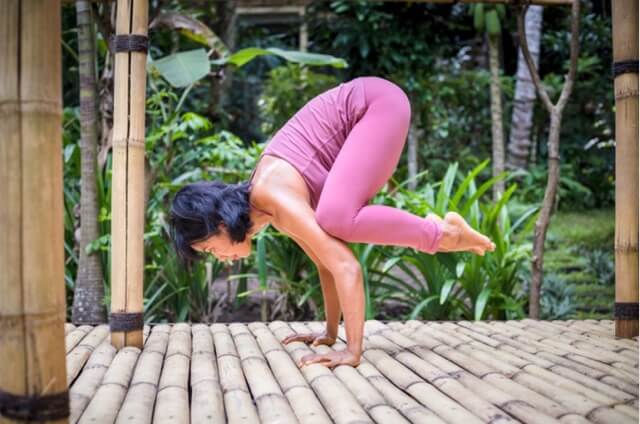Author: Randeep Singh / go to all articles on Yoga cure
Yoga exercises for arms:
Arms are the pair of upper limbs which are attached laterally to both the sides of the upper torso.
At the core of the arms are the bones to which are attached the muscles, which manipulate these bones in different ways for different actions that are undertaken by them. Yoga exercises for arms help strengthen these very muscles.
The arms are firmly attached through the shoulder girdle to the rib cage for a stronger hold. Humerus is the name of the long, single bone of the upper arm. This bone extends from the scapula in the shoulder girdle to the elbow joint of the upper limbs. Scapula, triangular bone also known as the shoulder blade is placed laterally in the upper posterior part of the rib cage.
The humerus is attached to the scapula with a joint called humeroscapular joint. Clavicular bone is another longitudinal structure which stretches from the acromioclavicular joint on the scapula to the sternoclavicular joint on the top of the sternum, right below the lower line of the neck. The clavicular bone permits the circular motion of the shoulder joint.
The shoulder is a ball and socket type of joint, the socket part for which is formed on the lateral side of the scapula, and the rounded head of the humerus forms the ball that fits into the socket on the scapula. Trapezius, deltoids, and rhomboids are the muscles which strengthen the shoulder joint by firmly weaving across on to it.
On the other hand latissimus dorsi, pectorals, deltoids, and the rotator cuff muscles help the humerus to lift, drop and rotate the upper arms at the shoulder. The Form arm is made up of two bones which run parallel to each other; radius and ulna. Ulna is larger and longer than the radius as it extends past to the humerus forming the bony tip of the elbow.
Ulna forms the lower edge of the forearm, on the side of the little finger and forms the wrist joint with the carpals and radius at its opposite ( distal) edge.
The radius bone is located on the thumb edge of the lower arm and has the ability to twist asper the movement of the hand. The elbow side end of the radius form a rounded pivot on which the lower arm can make rotating motions at the elbow.
Eight carpals join with the ulna and radius to form the wrist joint. The carpals are joined to the 5 metacarpals at their other end, which in turn are joined with 14 phalanges which form the five fingers. Biceps brachii is the muscle of the upper arm which covers the length of the humerus. It help rotate the forearm and flexes, on contraction, the hinge joint of the elbow.
Triceps muscles are present in the back of the upper arm and their function is to extend the arm at the elbow joint. Brachioradialis is the muscle located at the elbow end of the forearm and its function is similar to biceps brachii to rotate the forearm and flex the elbow joint when required. The muscle around the wrist is called extensor carpi radialis longus and deltoids are control the movements of the shoulder, help rotate the arms in, out and lift the arm in different directions.

Yoga Exercises for Arm
Yoga poses to tone arms apply isometric pressure on the muscles while maintaining their length, this creates lengthier, defined and flexible arm muscles. Isometric arm exercises work by creating internal tension within the muscles without contracting or stretching them e.g. creating resistance within the arm by pressing the straight arm against the wall or the floor. This imparts lean and toned character to the arms.
Yoga arm balances work by applying the body weight along the length of the arms, the body stands inverted over the arms raised vertically over the mat. All the yoga asanas for the arms which keep the rest of the body above the mat help develop the three major muscles – the biceps, triceps, and the deltoids – help increase the strength of the arms and the shoulders.
Not only the inverted asanas, but even the standing poses which fall under yoga for slim arms category enhances the tone of the muscles of the arms as they are held stretched in position against the force of gravity. The strength in the torso muscle is the prerequisite for being able to attempt any exercises under yoga for biceps and triceps, the muscles around the torso act as an anchor to the movements of the arms (Abduction and Adduction) while one practices any yoga exercises for arms.
One of the incidental benefits of practicing arm exercises which involves the arms bearing the weight of the body is that the pressure generated on the bones of the arms by doing so helps increase the bone mass preventing osteoporosis in the upper limbs. Yoga poses for flabby arms remove the flab by toning the muscles involved it also improves the range of motion of the joints in the arms – elbow, wrists, phalanges – which enhances the flexibility of the arms.
Yoga Asanas for Strong Arms
Other Informative Articles….

